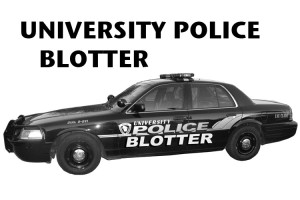A faculty member of the chemistry department recently received a $65,000 grant to continue research done by undergraduate chemistry students.
The grant, funded by the American Chemical Society Petroleum Research Fund, was approved in October with the funds available on the first of the year. The money joined another grant of $227,330 funded by the National Science Foundation awarded in June.
James Phillips, chemistry professor and recipient of the grant, will use the money to continue research that has been ongoing for 15 years. Undergraduate students, under the supervision of Phillips, research the links between molecules and experiment with those links under different environments, he said.
It is necessary to form an interesting and valuable question that needs to be answered to receive the funds, Phillips said.
“That’s what people underestimate about science,” he said. “There is a creative part of this because we need to convince somebody to invest in us.”
Michael Carney, the chair of the chemistry department,said investments like this one have gained a good reputation for the chemistry department. He also said since 2009, the department as a whole has been awarded about $1.5 million in grants.
That amount of money, plus the focus put on student research, has made Eau Claire’s chemistry department notable, said Carney.
The large amount of grants helps recruit faculty because others have been so successful in getting grants for their research, and prospective students are also drawn for the same reasons, he said.
“(It) helps recruit students because they realize they don’t have to go to Madison or the University of Minnesota to get involved in research,” Carney said.
Senior Kaitlin Bloomgren, a chemistry major, has been doing research with Phillips since this past summer. She said it is important for students in science to experience research, because it can guide them as to what they want to do after
they graduate.
“I wanted to try it for the experience,” Bloomgren said. “It helped me place myself for what I want to do with my chemistry degree.”
The money awarded for the research is used for equipment, chemicals, student stipends and pay for the faculty member supervising the research.
Carney said grants of this size are critical to the success of the department’s goals. By doing research, students are able to better determine what they want to do with their degree before entering the job market or going to graduate school.
“We want to help students figure out whether a research career is something suited to their abilities and the way their brain is wired,” Carney said. “The best way to do that is try it.”
Participating in experiments in a research setting is different than conducting them in a classroom or lab atmosphere because the students work one-on-one with a faculty member when doing research, which is less likely to happen in a classroom, Carney said.
Amanda Buchberger, a senior chemistry major, has been involved with the research since June of 2011. She said the critical thinking involved and the ability to learn by trial and error is what sets the research experience apart from learning in the classroom.
“When you’re in a lab, they give you a lab manual and they tell you what to do,” Buchberger said. “But when you’re doing research, it’s an opportunity to show you that failing is OK.”







